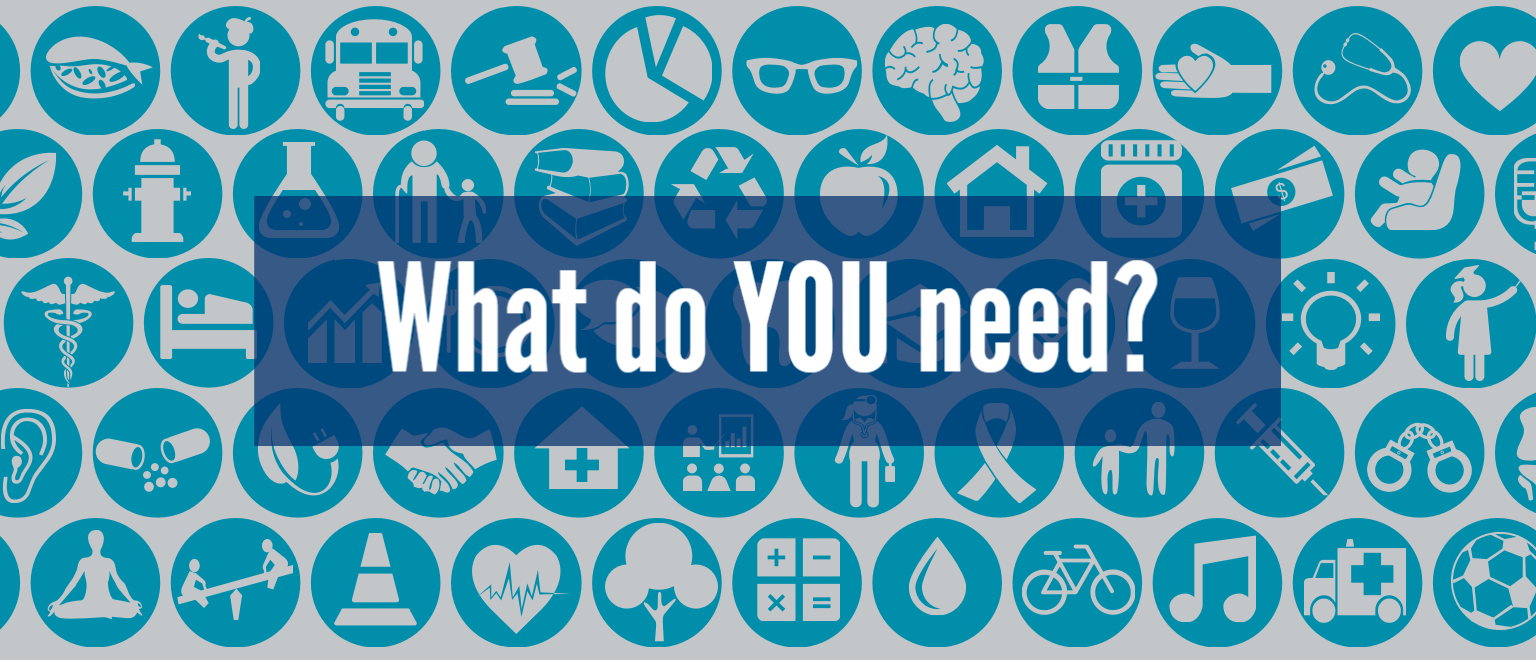Here’s why you need a needs assessment
The last couple weeks I’ve focused on program evaluation, which is an awesome way to use data to change communities for the better. But long before you do a program evaluation—hell, before the program is even a twinkle in your eye—comes the needs assessment.
A needs assessment is just what it sounds like: finding out what your target audience needs. You may be thinking, “I work with my community every day, I know what they need!” And you’re probably right. You are an expert on what your constituents need—whether that’s clean drinking water, gender equality, health insurance, or active transportation options. And, by extension, you probably know what programs and services they would benefit from. But there are many benefits of a needs assessment. Today, I’ll share with you my top two favorites.
A needs assessment will help you demonstrate to others that that the need you say exists really does exist.
Funders want to know that they are putting their money is having a major impact on improving lives. And you can’t blame them—if I was rich enough to fund community improvement efforts, I’d want to be sure I was funding the best programs that were most likely to make a different in areas of greatest need. If you are seeking funding to address a particular need and you back it up with, “I know that people need this”, it’s not terribly compelling. It feels a lot like when your parents said, “Because I said so, that’s why!”. It wasn’t satisfying then and it isn’t satisfying now.
Instead, if you say something like, “I know that people need this—15% of people in our community are affected by this issue, and that’s over 10,000 people in need”, your funders think, “OK, that’s really an issue! Let’s solve this problem.” It’s not just funders, either—these evidence-backed statements really help to rally your team, volunteer, the whole nine yards.
A needs assessment will help you design an effective program that can actually reach your goals.
Understanding the root cause of the needs is a major help in designing an effective program. I like to think of it in medical terms. What if you went to the doctor, and instead of assessing you and customizing your treatment based on the diagnosis, the doctor just signed you up for chemotherapy? Well, if you had cancer, that’s probably a pretty good program for you to be in, and will probably result in you feeling better. But if you had a broken arm, that’s probably not going to help you much—what you really needed was to have the bone set and get a cast. A need assessment is basically that initial doctor’s visit, where you assess symptoms and make a diagnosis and then prescribe a treatment plan.
Here’s what that sometimes looks like in the context of changing communities for the better. Let’s say that you are a member of the US Green Building Council, and you want to promote environmentally-friendly (“green”) buildings; you strongly believe that this is better for people, the environment, and the community as a whole. However, you’re disappointed because relatively few new buildings in your region are adopting green building practices. So your goal is to develop a program to encourage more contractors to participate in green building practices.
The program you design will rely heavily on what the root cause of the program. For example…
| If the barrier is… | …then the program should… |
| Knowledge—Contractors don’t know about green building | Educate contractors on what green business is, and the benefits of it |
| Expertise—Contractors don’t know how to do green building right, or don’t have the relevant experts available | Provide training on green building principles, and a resource list of experts |
| Expense—Contractors can’t afford to engage in green building practices | Offer assistance in navigating available monetary incentives/rebates to maximize affordability |
If you didn’t do a need assessment, and you don’t know what the root cause is, you have to guess at it. If you assume it’s because there’s a knowledge gap, you would design a program to educate contractors about how great green building is, and how critical it is to improving lives. But if the problem really was that they can’t afford to do it, your intervention likely won’t result in any increase in green building. After all, they wanted to do green building all along—you were preaching to the choir. They just can’t figure out how to make it affordable. To move the needle on this issue—aka actually increase the number of green buildings in your community—you need to design a program that will help with the expense aspect of it.
Want to see an example of what a finished needs assessment looks like? Check out our work sample here.
Coming up next week–how to pick which needs you plan to address!
